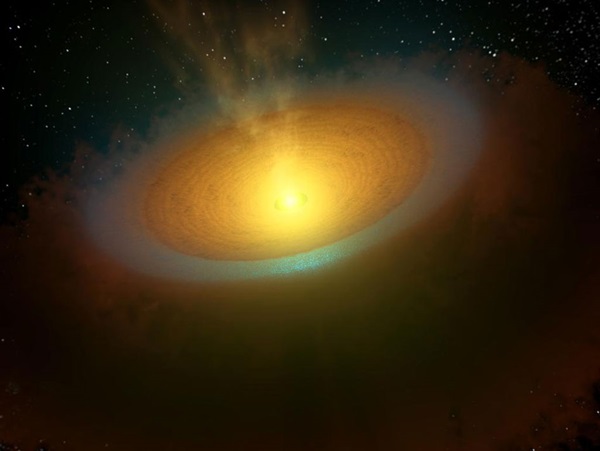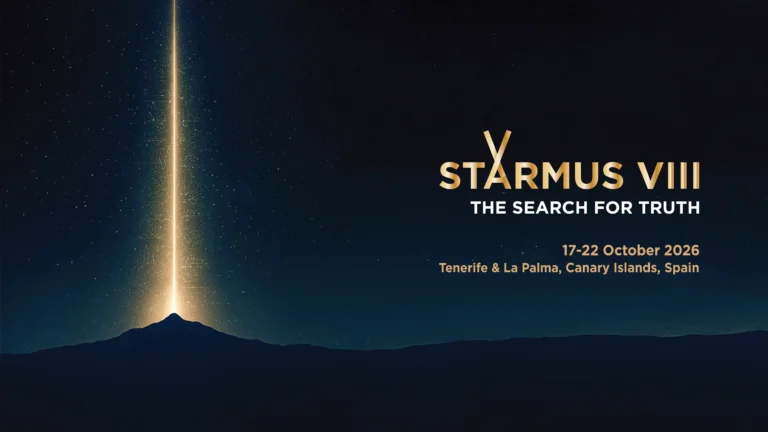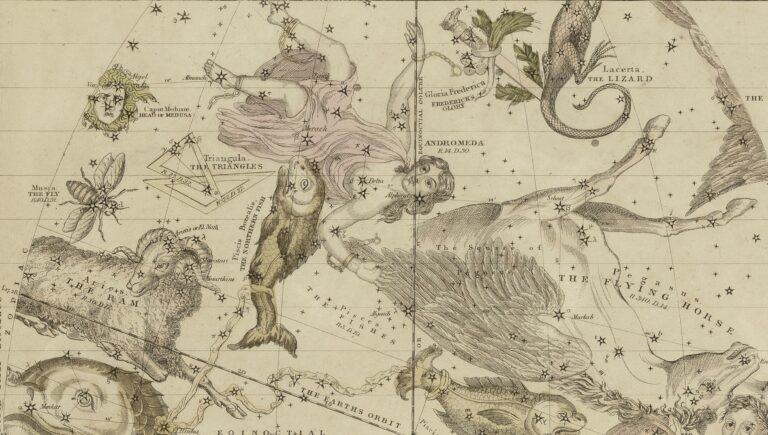Key Takeaways:
Scientists previously found warm water vapor in planet-forming disks close to a central star. Evidence for vast quantities of water extending out into the cooler far reaches of disks where comets take shape had not been seen until now. The more water available in disks for icy comets to form, the greater the chances that large amounts eventually will reach new planets through impacts.
“Our observations of this cold vapor indicate enough water exists in the disk to fill thousands of Earth oceans,” said Michiel Hogerheijde from the Leiden Observatory in The Netherlands.
The star with this waterlogged disk, called TW Hydrae, is 10 million years old and located about 175 light-years away from Earth in the constellation Hydra. The frigid, watery haze detected by Hogerheijde and his team is thought to originate from ice-coated grains of dust near the disk’s surface. Ultraviolet light from the star causes some water molecules to break free of this ice, creating a thin layer of gas with a light signature detected by Herschel’s Heterodyne Instrument for the Far-Infrared (HIFI).
“These are the most sensitive HIFI observations to date,” said Paul Goldsmith from NASA’s Jet Propulsion Laboratory in Pasadena, California. “It is a testament to the instrument builders that such weak signals can be detected.”
TW Hydrae is an orange dwarf star, somewhat smaller and cooler than our yellow-white Sun. The giant disk of material that encircles the star has a size nearly 200 times the distance between Earth and the Sun. Over the next few million years, astronomers believe matter within the disk will collide and grow into planets, asteroids, and other cosmic bodies. Dust and ice particles will assemble as comets.
As the new solar system evolves, icy comets are likely to deposit much of the water they contain on freshly created worlds through impacts, giving rise to oceans. Astronomers believe TW Hydrae and its icy disk may be representative of many other young star systems, providing new insights on how planets with abundant water could form throughout the universe.
Scientists previously found warm water vapor in planet-forming disks close to a central star. Evidence for vast quantities of water extending out into the cooler far reaches of disks where comets take shape had not been seen until now. The more water available in disks for icy comets to form, the greater the chances that large amounts eventually will reach new planets through impacts.
“Our observations of this cold vapor indicate enough water exists in the disk to fill thousands of Earth oceans,” said Michiel Hogerheijde from the Leiden Observatory in The Netherlands.
The star with this waterlogged disk, called TW Hydrae, is 10 million years old and located about 175 light-years away from Earth in the constellation Hydra. The frigid, watery haze detected by Hogerheijde and his team is thought to originate from ice-coated grains of dust near the disk’s surface. Ultraviolet light from the star causes some water molecules to break free of this ice, creating a thin layer of gas with a light signature detected by Herschel’s Heterodyne Instrument for the Far-Infrared (HIFI).
“These are the most sensitive HIFI observations to date,” said Paul Goldsmith from NASA’s Jet Propulsion Laboratory in Pasadena, California. “It is a testament to the instrument builders that such weak signals can be detected.”
TW Hydrae is an orange dwarf star, somewhat smaller and cooler than our yellow-white Sun. The giant disk of material that encircles the star has a size nearly 200 times the distance between Earth and the Sun. Over the next few million years, astronomers believe matter within the disk will collide and grow into planets, asteroids, and other cosmic bodies. Dust and ice particles will assemble as comets.
As the new solar system evolves, icy comets are likely to deposit much of the water they contain on freshly created worlds through impacts, giving rise to oceans. Astronomers believe TW Hydrae and its icy disk may be representative of many other young star systems, providing new insights on how planets with abundant water could form throughout the universe.










